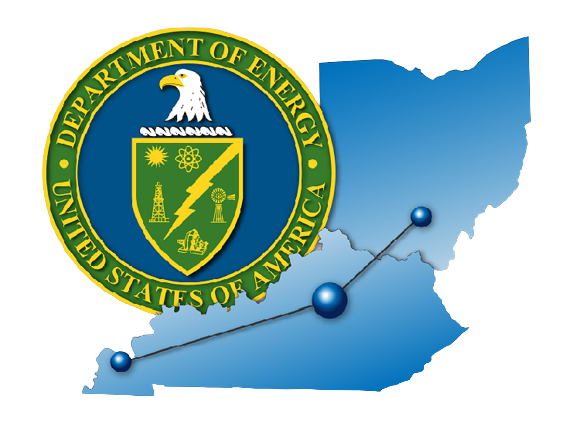Nov/Dec Public Meeting QA's
There is no specific definition of “ground level”. In general, the inlet sampling point of a ground level air monitor shall be between 1.5 m (the breathing zone) and 4 m above the ground. Higher positions (up to 8 m) may be necessary in some circumstances. Higher siting may also be appropriate if the station is representative of a large area.
DOE hopes to return to in-person public meetings in the near future. We continue to monitor regional conditions related to COVID-19 and are responding accordingly. Virtual outreach offers a safe and viable option to engage the community with updated site information.
MAGLC values tables are developed by Ohio EPA and are used extensively in their permitting process for air toxins. More information can be found at: http://www.epa.state.oh.us/dapc/atu. For information more specific to the site’s MAGLC please see the third bullet, option A at http://www.epa.state.oh.us/portals/27/atu/option_a.pdf.
Based on previous studies and current site activities, there is no significant threat from PORTS to the public and the environment. However, DOE does maintain an Emergency Planning Zone (EPZ) surrounding the plant site in the unlikely event of a large-scale hazardous material release posing danger to workers and the public near the site. The EPZ is coordinated with local emergency services and has a developed communications strategy, if needed.
Numerous studies completed during plant operations and cleanup provided information of contaminant types, volume, and locations associated with the site. There is no indication that contamination from the site has been detected Ross County.
Based on past studies, DOE developed a comprehensive monitoring program that collects over 10,000 samples a year. The results are presented in the Annual Site Environmental Report (ASER). The 2020 ASER and related data are available on PEGASIS at https://pegasis.ports.pppo.gov/Pegasis/Default.aspx
Past ASER’s are available at https://portsdemo.com/environmental-reports/
Other DOE public documents are available at the Portsmouth Environmental Information Center at https://eic.ports.pppo.gov/
The community has expressed a desire to utilize as much of the DOE site as possible for reindustrialization activities. DOE’s Environmental Management program intends to transfer real property assets to the community as they become surplus to departmental needs and are deemed appropriate for transfer, based on intended future use. DOE cleanup plans support the economic reuse scenario developed by the community.
DOE utilizes a local organization for redevelopment activities at the site. This organization, the Southern Ohio Diversification Initiative (SODI), was formally recognized by DOE as the Community Reuse Organization for real estate assets at the Portsmouth Site. Information on SODI may be found on the web (www.sodidevelopment.org).
DOE has also provided grant funding to Ohio University to work with the community and SODI to determine best future uses that are reflective of the community’s desire for new economic development. You may find more information on the web (portsfuture.com).
The PORTS ambient air monitoring program that covers the onsite and offsite areas will continue until all waste treatment operations, demolition and environmental remediation activities are completed.
In addition, the comprehensive environmental monitoring program will continue for the entire site and areas that require monitoring after the cleanup mission is complete will be transferred to DOE’s Office of Legacy Management.
DOE mails over 87,000 notifications to residences in the four county area, in addition to stakeholders signed up for our mailing list. You can sign up for this mailing list at portsvirtualevent.com
Air and other environmental monitoring data collected to date shows no significant impacts to workers, the public, and the environment during the X-326 demolition.
